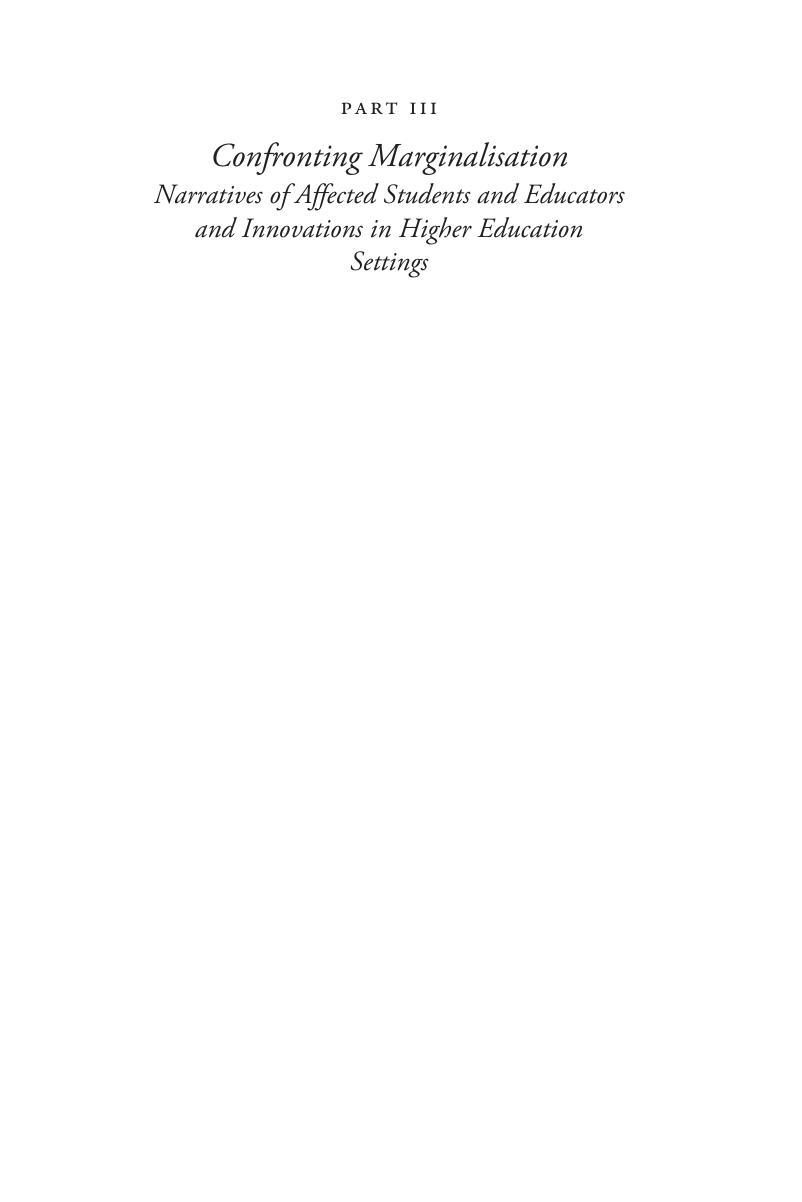Part III - Confronting Marginalisation
Narratives of Affected Students and Educators and Innovations in Higher Education Settings
Published online by Cambridge University Press: 06 September 2020
Summary

- Type
- Chapter
- Information
- A Better FutureThe Role of Higher Education for Displaced and Marginalised People, pp. 315 - 472Publisher: Cambridge University PressPrint publication year: 2020



